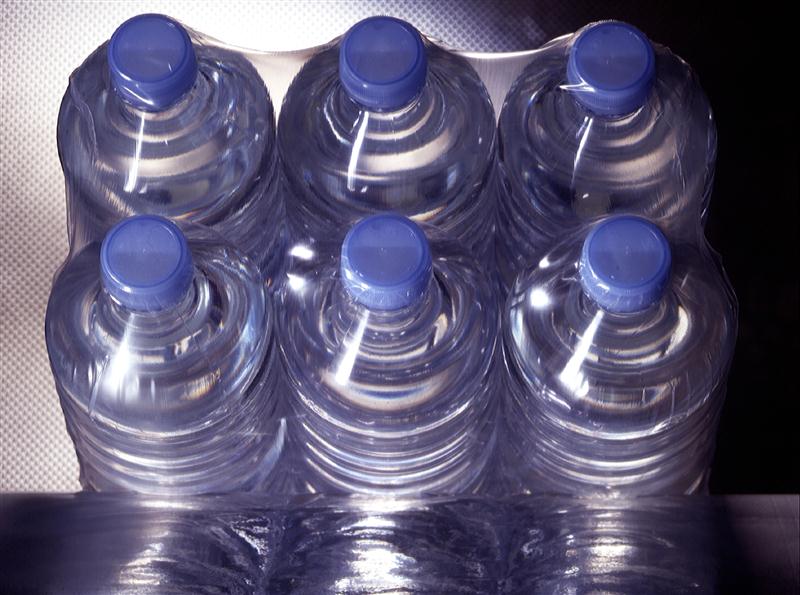Polyethylene Teraphtalate
Polyethylene teraphtalate: is one of the most commonly used plastics in Europe’s packaging industry for several reasons

- History
- Properties
- Applications
- Processes
- Recycling
- Faq
History
PET was originally synthesized by Dupont chemists during a search for polymers to make new textile fibres, but the technology for making the very the long chains was developed by ICI (Imperial Chemical Industries) in 1941. Polyester fibre applications have developed to such an extent that by the late 1990's PET represented over 50% of world synthetic fibre manufacture. It is used alone or to blend with cotton or wool to confer better wash/wear and crease resistant properties, in fibre form it is better known as 'Dacron' or 'Trevira'. In the late 1950's, PET was developed as a film by stretching a thin extruded sheet in two directions; in this form PET film finds extensive use as video, photographic and X-ray film in addition to uses in packaging.
In the early 1970's, stretching in three dimensions by blow moulding - similar to inflating a balloon in a shaped mould - produced the first bottle type containers initiating the exploitation of PET as a lightweight, tough, unbreakable substitute for the glass bottle.
Properties
If you ever had fizzy drink, water or fruit juice from a plastic bottle then more than likely the bottle is made of PET, or polyethylene terephthalate.
PET is one of the most commonly used plastics in Europe’s packaging industry for several reasons. It is very strong, it can withstand high pressures and being dropped without bursting. It has excellent gas barrier properties, so it keeps the fizz in fizzy drinks, and protects the taste of the drinks in the bottles.
Applications
Typical applications of PET include:
- Bottles for beverages such as soft drinks, fruit juices, mineral waters. It is especially suitable for carbonated drinks, cooking and salad oils, sauces and dressings and detergents.
- Wide mouth jars and tubs for jams, preserves, fruits & dried foods.
- Trays for pre-cooked meals that can be re-heated in either microwave or conventional ovens. Pasta dishes, meats and vegetables.
- Foils for 'boil-in-the-bag' pre-cooked meals, snack foods, nuts, sweets, long life confectionery.
- Other PET products with an extra oxygen barrier are ideal for containing beer, vacuum packed dairy products e.g., cheese, processed meats, 'Bag in Box' wines, condiments, coffee, cakes, syrups.
Processes
The raw materials for PET are derived from crude oil, as are many other plastics - after refining and separating the 'crude' into a variety of petroleum products the two PET intermediates or monomers are eventually obtained, purified, and mixed together in a large sealed, 'cooking pot' type of vessel and heated up to 280 to 300 ¼C under a slowly reducing the pressure. Each intermediate has two identical points for reaction and is therefore capable of forming chains by linking several single molecules together and forming a polymer where the monomers are bonded by ester linkages.
The mixture becomes more and more viscous as the reaction proceeds and it is eventually halted once the appropriate viscosity is reached. At this stage the PET is extruded from the reactor in the form of thin 'spaghetti like' strands, cooled quickly under water and chopped into small transparent granules or pellets before drying and transfer to other treatment stages. PET for manufacture of cola bottles is further refined by heating the solid granules below their melting point which distills out some impurities and at the same time enhances the physical properties of the material.
Recycling
PET is widely recycled as a material, making a large contribution to the recycling targets required for plastics by the EU directive. When material recycling is not feasible, PET can be incinerated with energy recovery.
Moreover, PET usually does not contain heavy metals and/or substances dangerous for the environment.
PET can be recovered, and the material reused, by simple washing processes to regenerate clean washed polymer flake (mechanical recycling), or by chemical treatment to break down the PET into oligomers or up to the starting monomers, terephthalic acid and ethylene glycol (chemical recycling). These intermediates are then purified and repolymerised into new PET resins. A final option, for PET that is unsuitable for material recycling (e.g., very dirty, or too contaminated to clean), is to use PET as an energy source.
